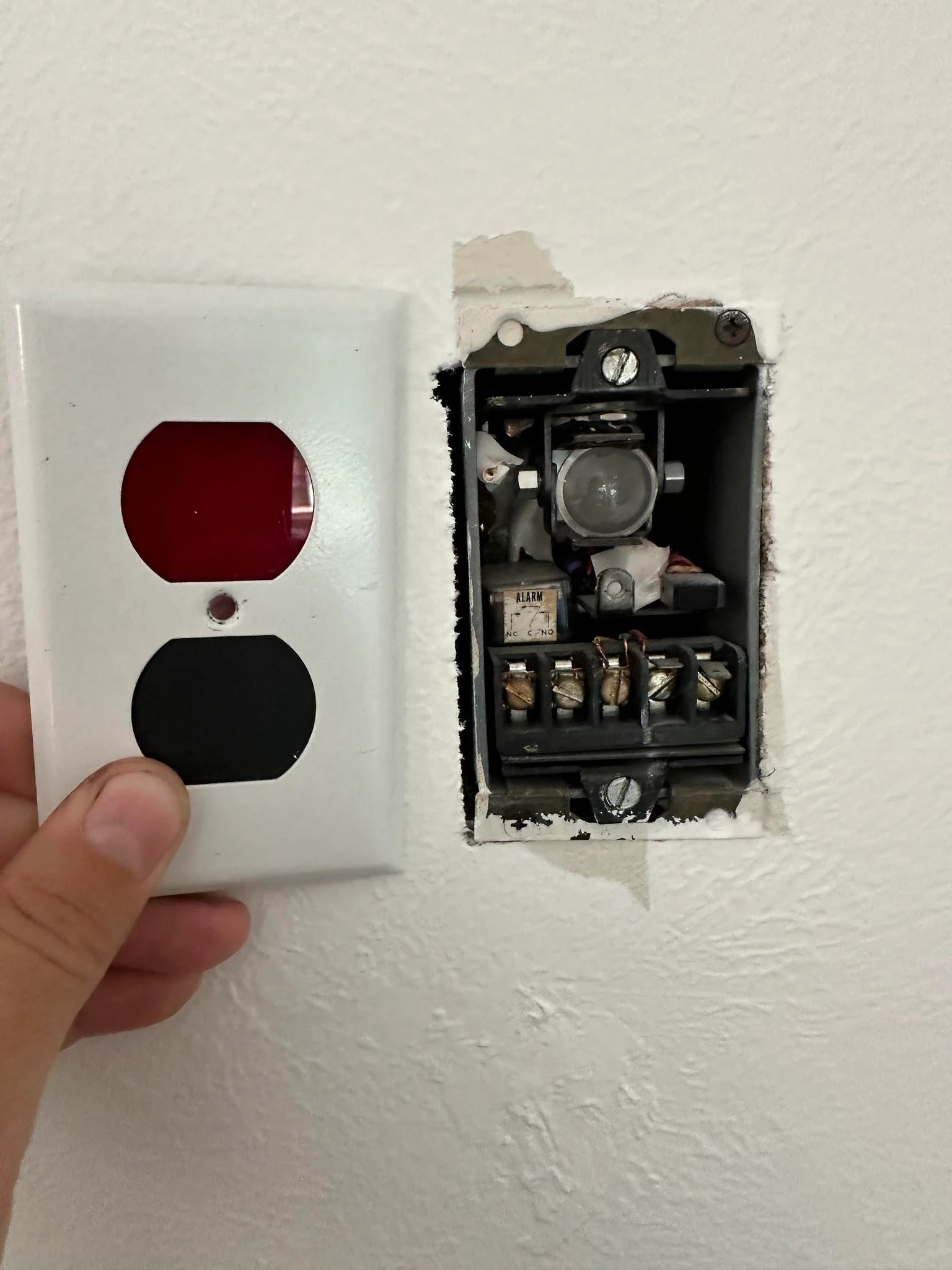Imagine walking into an old house, one that hasn’t been updated in decades. The floors creak, the doors are solid wood, and the electrical outlets seem strangely placed. But what if one of those odd wall features wasn’t an outlet at all? What if it was part of a hidden security system from the 1940s that used beams of light instead of modern cameras or motion detectors?

Back then, homeowners had access to an innovative device called the Detect-O-Ray—a no-frills, light-based home and business security system that was surprisingly advanced for its time. Instead of relying on electronics or digital signals, the Detect-O-Ray worked using a photoelectric principle. One unit would send out a beam of light, typically infrared, across a room or hallway to a receiver or reflective surface. When someone walked through and broke that beam—or even if an object fell into its path—the system would trigger an alarm. It acted like a silent sentinel, a kind of early warning system to alert the homeowner that something was amiss.
These systems were commonly placed in long hallways, at store entrances, or even around the perimeter of larger properties. Though it wasn’t flashy, its subtle and discreet presence served a purpose similar to a hidden intercom system—quiet, dependable, and hidden in plain sight. Fast forward to the present day, and you might be surprised to discover traces of these systems still installed in certain older homes, particularly in places like Hoboken, where retro architecture is often preserved
You might see a small lens on the wall, slightly reddish or dark in color, and think it’s just an outdated fixture or unused outlet. But that lens could very well be a remnant of a Detect-O-Ray system. These components were usually installed in pairs, directly facing each other across a space. When properly aligned, they could create an invisible barrier of protection. The system worked best in low-light conditions, which made it harder to detect with the naked eye.
If the beam was interrupted, even for a split second, it would trigger an alarm, alerting the homeowner that something was moving where it shouldn’t be. For its time, this technology offered a surprisingly effective layer of protection, much like a hidden intercom wired inside the walls of the house. Devices like the Detect-O-Ray were truly ahead of their time. While most people today think of motion sensors or laser security systems as modern inventions, their origins trace back to these early photoelectric devices. According to the Made in Chicago Museum, the Detect-O-Ray and similar systems set the foundation for today’s high-tech security solutions. They married science with practical need, offering peace of mind before the days of digital technology and smart home integration. Even though most of these systems are no longer in working order, the mere fact that they still exist in some homes speaks to their thoughtful design and effectiveness. If you’re lucky enough to find one in your own home, don’t dismiss it as outdated or irrelevant. You’re looking at a piece of security history—a reminder of how creative and forward-thinking people were even before modern tech made everything wireless and automatic. Before security apps and smart locks, there were light beams silently standing guard. In a time without internet or Bluetooth, a simple beam of light provided reliable security. The Detect-O-Ray may not be in use today, but it paved the way for the sophisticated motion detection systems we now take for granted. It proves that good ideas don’t need to be complicated; they just need to work. So, next time you’re exploring an older home and you notice an odd lens in the hallway or an unusual wall fixture, take a second look. You might be staring at a forgotten piece of American ingenuity. That small, strange device could be a part of the original motion detector legacy, hidden in plain sight, quietly reminding us of a time when technology was simple, smart, and far ahead of its time.





